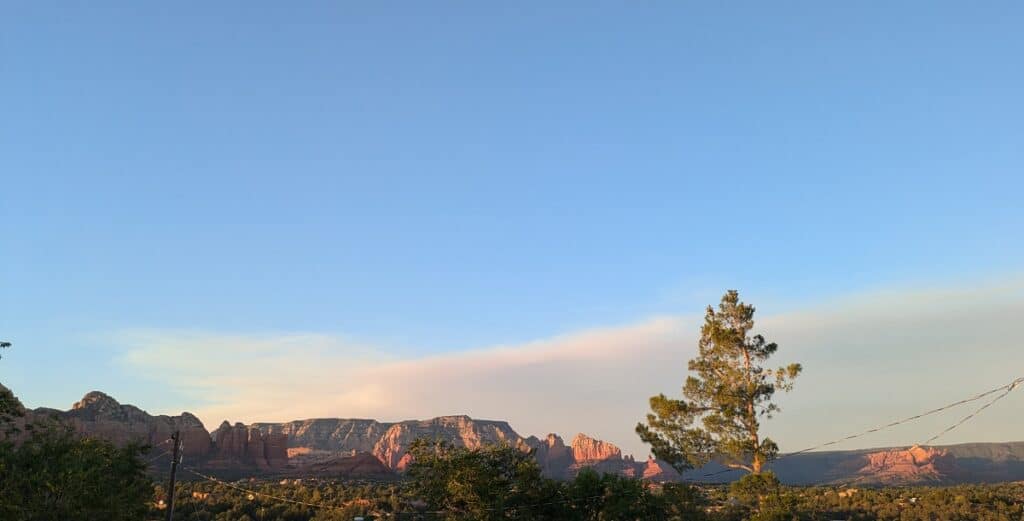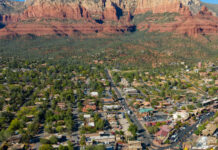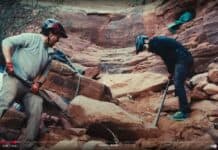These are the dog days of summer. We are now in the hot stretch of the summer between the last bit of cooler weather in late spring and the onset of the monsoon in late July, although rainfall expectations will be light this month and only sporadic in August.
According to the Old Farmer’s Almanac, the dog days of summer are the 40 days from July 3 to Aug. 11 when temperatures are high, rain is rare and we humans are lethargic as we endure the heat of the day.
The term comes from the rising of the star Sirius, aka the “dog star,” in the constellation Canis Major, the brightest star in the night sky. Officially called Alpha Canis Majoris A in modern star charts, the Greek “Seirios” meant “glowing” or “scorching,” as ancient Greek and Near East Hellenic astronomers believed the high temperatures of summer were caused as earth drifted toward this “hot” star late in the summer season, raising temperatures.

Of course, we now know that Sirius is 8.6 light years from earth, and only our home star affects earth’s relative temperature. Sirius only seems bright to us on earth because it’s the nearest A-type main-sequence star in close proximity to us.
Incidentally, Sirius A is a binary system, orbited by a white dwarf, Sirius B, discovered in 1844.

We’re also in the summer slowdown as tourist visitation is down citywide following the very busy Fourth of July weekend. The holiday itself fell on a Thursday, which meant a four-day weekend for many tourists in the Phoenix area. Anyone who drove along State Route 179 or toward Uptown or east Sedona over the weekend felt the full brunt of the traffic delays as pass-through visitors headed up from the Village of Oak Creek to Oak Creek Canyon to enjoy the cool weather and water.
Now, post-holiday, the merchants that rely on tourists will really struggle to keep their heads above water and their bottom lines in the black, e.g., restaurants, bars, hotels, resorts, retail shops, tour agencies, car rental companies, spas, massage therapists and so on. The secondary and ancillary merchants who rely on those front-line tourist businesses also suffer a slowdown — caterers, wedding professionals, photographers, mechanics and technicians, cleaners, transportation drivers and the musicians, DJs and entertainers who perform at venues, weddings and parties. Some, like mechanics and mechanical technicians, can fall back on services for residents, but many must bide their time and survive on what they earned during the peak until tourism resumes in the fall.
We also have wildfires burning around the state. The smoky horizon we saw on Sunday afternoon from wildfires settled overnight and the majority of Sedona and the Verde Valley woke up to smoky skies on Monday morning.

As wildfires burn around the region as far east as the New Mexico border and as far north as the Grand Canyon and south of Prescott, the Verde Valley is a bowl for smoke — a basin wherein particulates descend overnight with no real relief to be expected until the monsoon storms come into force.

Late last month, a storm brought us some relief as we went from Stage I fire restrictions to Stage II and back to Stage I. It’s really anyone’s guess if stricter restrictions may return in the weeks to come. Stage II restrictions have some stricter rules than State I and most who recreate won’t really have much issue with the prohibitions or be that affected — after all, serious hikers who tackle trails in the summer tend not to smoke cigarettes, and with nighttime temperatures over 70 degrees, a campfire to stay warm at night isn’t very necessary. However, Stage III fire restrictions can lead to full closures of areas or the forest as a whole as state, federal and regional fire managers clamp down on any potential spark or flame that could ignite a blaze on public lands.
The monsoon, when it arrives, is expected to be lighter than normal, as our regular wet monsoons are not predicted to return until at least 2025 or 2026.
Most schools in the Verde Valley will return to full classes in the first week of August. Parents who were able to offer their children activities in June have to be wondering what to do now in July as those earlier activities have run their course.
Fortunately, the Sedona Community Pool is open next to West Sedona School with recreational swimming in the afternoons on weekdays, from 1 to 5:15 p.m., and on both Saturday and Sundays from 11:30 a.m. to 7 p.m. Summer films are showing in theatres. The Sedona Public Library has its Summer Reading Program going on through July and numerous community events. Oak Creek and the Verde River are both accessible and local swimming holes offer refreshing dips if you can find a parking spot or are willing to walk. Local restaurants and bars would love the extra business as tourists clear out, so considering supporting local merchants through the lean weeks ahead. Temperatures should begin to fall into the mid-90s by the end of July, but get ready for more hot days until then.















![wa-Sedona-Summer-Splash-_07-10_06[1]](https://www.redrocknews.com/wp-content/uploads/2024/07/wa-Sedona-Summer-Splash-_07-10_061-696x464.jpg)


